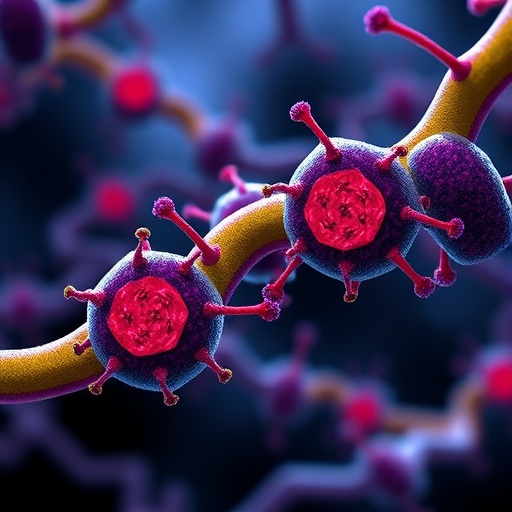Chemical engineering professor Dr. Jeetain Mittal has received a National Institutes of Health grant to support his work on phase separation.

Credit: Texas A&M University
Chemical engineering professor Dr. Jeetain Mittal has received a National Institutes of Health grant to support his work on phase separation.
Mittal’s research focuses on developing a multiscale computational framework to investigate the role of phase separation in biology, particularly in the formation of heterochromatin. Heterochromatin condensates are membraneless organelles that help control gene expression.
A key aspect of the proposal is the role of phase separation in chromatin organization, highlighting the need for new models in this area. Mittal’s strategy aims to elucidate the molecular origins of phase separation using innovative models and methods tailored to relevant phase separation systems.
According to Mittal, this research could lead to insights into neurodegenerative diseases such as Alzheimer’s disease, Parkinson’s disease, amyotrophic lateral sclerosis (ALS), and frontotemporal dementia. The proposed work aims to develop and utilize multiscale computational methods, from the atomic to the mesoscale level, to build a molecular mechanistic framework.
“In the context of heterochromatin, you’re dealing with tightly controlled gene expression,” Mittal said. “This process involves the phase separation of proteins and nucleic acids, which helps form these membraneless compartments.”
Phase separation plays a role in diverse biological processes and can explain longstanding questions related to cellular organization. The first part of the project will focus on the phase separation of RNA-binding proteins and their role in DNA damage repair and transcriptional condensates formed by fusion oncoproteins.
The team aims to decipher the relationships between amino acid sequence, phase behavior, condensate dynamics, and biological function to leverage phase separation for synthetic biology and understanding cellular function and dysfunction.
The second part of the project will provide a detailed molecular picture of phase-separated protein assemblies in chromatin organization, focusing on the co-phase separation of the heterochromatin protein family.
This research changes the way scientists think about biological organization and can predict which biomolecules or proteins will form membraneless organelles. By building and using computer models, the proposal aims to simulate the process of phase separation in a controllable way, expanding the scope of these models.
Mittal believes that a combination of computer modeling and experimental techniques such as NMR, microscopy, and microrheology can provide the best path toward uncovering the relationship between amino acid sequence and phase separation. The ultimate goal is to push the boundaries of what is possible, gaining insights that will help discover new therapies and bridge the gap between macroscopic observations and macromolecular phase separation.
By Raven Wuebker, Texas A&M University Engineering
###




